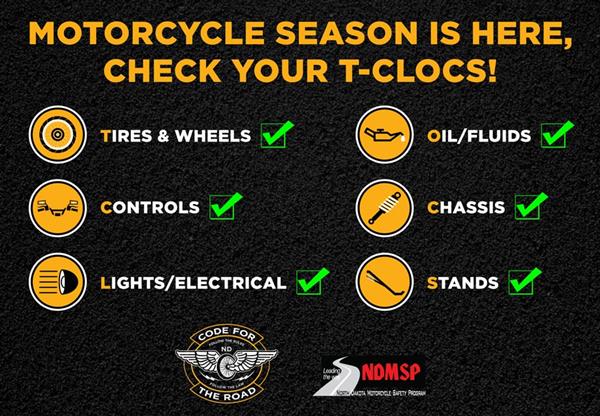Gear up. Use full protective gear, including a helmet.
Ride sober. In 2021, alcohol was involved in 40% of all motorcycle fatalities.
Stand out. Be conspicuous to increase the chances that other drivers will see you.
Slow down. In the past five years (2017-2021), speed has been a contributing factor in 32% of motorcycle fatalities in North Dakota.
Fix up. Check your T-CLOCS to make sure your motorcycle is ready to ride safely.
Practice up. Motorcycle safety courses can benefit riders at all skill levels.